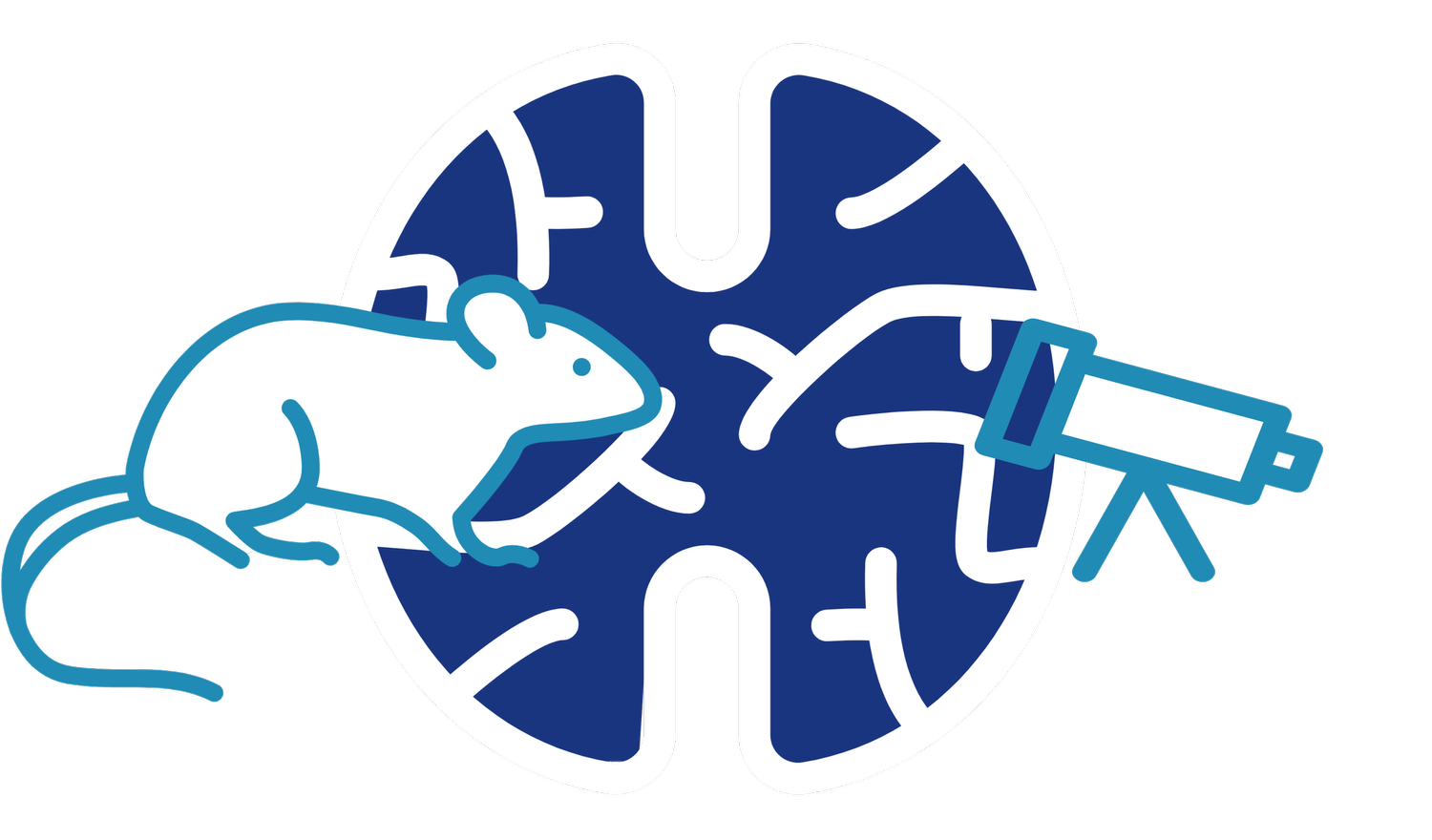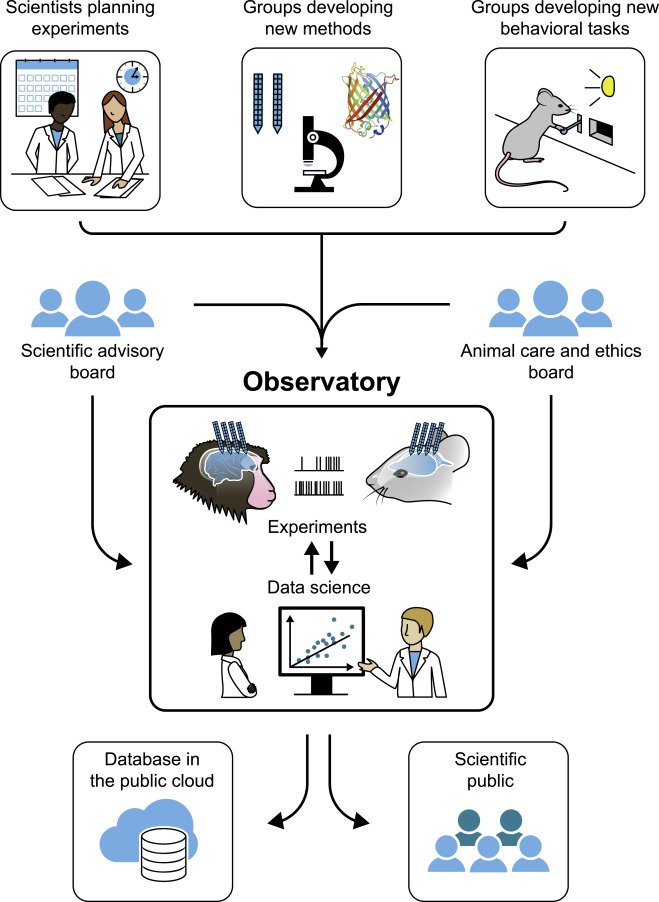The Vision
We aim to build a new Brain Observatory 🧠 that allows researchers from around the 🌏 to pitch projects to collect large-scale (from across the brain) maps of Neuropixel-based recordings in behaving mice 🐭 🔭.
These projects can come in two flavors:
Open BBO: demonstrate you have a great behavior and now want brain-wide neural data to uncover new principles
Theory BBO: you can pitch a theoretically-grounded idea and the BBO team will work with you to adopt a behavioral paradigm to your question.
For both tracks, the project pitches can be open-sourced for community input, or from groups of researchers. We then aim to collect ~100-300K neurons per behavior and make the data and code fully open source for the world to use, no embargo.
Read the Neuron publication (2022) that we and others outlined a vision for a network of Brain Observatories, like the OpenScope at the Allen Institute & The budding Brain & Behavior Observatory in Europe, which we propose here.
We need YOUR support - please consider signing the form to share your enthusiasm for building the BBO! This helps us build community and justify to funders that there is enough enthusiasm for building the Observatory.
Executive Summary
Neuroscience is at a watershed moment in its history. Technology now allows recording the activity of 1000s of neurons simultaneously in behaving mice and new technology is already on the horizon that will increase this number dramatically. In mice, we can also measure the release of neurotransmitters with unprecedented precision, characterize the anatomy of neural circuits down to single synaptic boutons, and analyze behavioral and neural data with powerful machine learning algorithms.
Unfortunately, the technical and financial cost of deploying these technologies is also rapidly increasing, making them accessible only to an elite group of well-funded scientists in rich countries. As a result, most neuroscience labs cannot benefit from these new tools. Here, we propose to build a mouse-focused European-based Brain Observatory that will allow access to cutting-edge technology to researchers globally. This facility, staffed with experts in technology and animal behavior, will allow any collaboration across the world to record from thousands of neurons simultaneously in mice, and 100s of thousand neurons across the entire brain within a few months at a fraction of the current financial and animal cost.
Critically, access to this Observatory will be based solely on merit and projects selected by an international rotating committee. Experiments mostly will be designed and piloted in the original laboratories before massive data collection at the Observatory. Access to this Observatory to the most meritorious projects will be free, and the resulting data will be made publicly available. Labs will have to invest resources in the initial development of the behavioral task and the analysis of the dataset but the data will be collected at no cost, thus ensuring rapid adoption of these new tools by the community.
What we propose is similar to the transition that took place in Physics in the middle of the 20th century and that led to the development of large community tools such as particle accelerators, large telescopes and gravitational wave detectors. Our goal is to democratize neuroscience and ensure that the neuroscientists with the best theories and ideas get access to the best technology.
We propose to start the development of this Observatory immediately and to make it available within two years to the community. This is a complex and daunting challenge but most of the ingredients are either available now or will be within a year. The Observatory would be operated by professors from the EPFL and the University of Geneva, as well as highly specialized and skilled staff and technicians. It will rely on the latest generation of Neuropixels probes, including the next generation probes, which will be made available to the Observatory. The Neuropixel insertion system will be based on a design from the Allen Institute for Neural Dynamics. Our data infrastructure will be building on the latest advancements in cloud computing and storage, and utilize industry-grade databases and machine learning tools for processing of data.
The Observatory will abide and commit to the principles of open science. All technology and software will be shared with the community and the collected data will be made available at no cost to all neuroscientists across the world.


